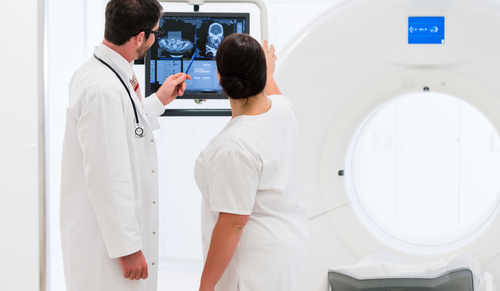Phase 3 Study of Exablate Neuro Ultrasound System to Treat Parkinson’s Motor Symptoms Begins

The first patient with advanced Parkinson’s has been treated in a pivotal Phase 3 trial using MRI-guided focused ultrasound to address major motor symptoms of the disease.
The multisite, randomized, and double-blinded clinical trial (NCT03319485) is evaluating the safety and effectiveness of MRI-guided focused ultrasound delivered to affected brain areas using Insightec’s Exablate Neuro system.
It plans to enroll more than 100 patients with advanced idiopathic Parkinson’s whose disease does not respond to available therapies for motor problems or fluctuations like dyskinesia (involuntary and jerky movements), tremors, rigidity, and slowed movement.
All will be followed for at least one year to determine the investigative therapy’s effectiveness and durability, with a primary goal being changes from baseline — or study start — at three months as measured by Unified Dyskinesia Rating Scale (UDysRS) scores. Secondary outcomes will look at the safety of both the device and the nonsurgical procedure.
Patients will be randomized to either the focused ultrasound treatment or a sham procedure for an initial three months of efficacy and safety evaluations. Patients in the sham arm will then have the opportunity to undergo the ultrasound therapy.
Because the trial is still in the blinded phase, it is not known what treatment was given this first patient enrolled at Weill Cornell Medicine and NewYork-Presbyterian/Weill Cornell Medical Center.
Results of this Phase 3 study are expected to support an application to the U.S. Food and Drug Administration for the treatment’s approval in these Parkinson’s patients. The Exablate Neuro system is already FDA approved to treat essential tremor in people who fail to respond to medication.
“This important pivotal study builds upon earlier work in small groups of patients to determine if focused ultrasound can be a possible treatment for Parkinson’s disease,” Michael Kaplitt, MD, PhD, a professor of neurological surgery at Weill Cornell Medicine and a neurological surgeon at NewYork-Presbyterian/Weill Cornell Medical Center, said in a press release. “We … hope that the results will help us and the FDA determine whether this experimental therapy can be a safe and effective noninvasive option for patients who are having difficulty with medical therapy.”
Exablate Neuro is a medical device that uses focused ultrasound to target and destroy damaged tissue in deep-brain areas responsible for involuntary motor symptoms.
The MRI allows treating physicians to create a temperature map of the brain, giving them a real-time picture of the region they want to directly target with the sound waves. They then raise the acoustic energy levels to heat and destroy the disease-affected tissue. Patients are awake throughout the procedure and able to give feedback.
“The goal of the focused ultrasound treatment is to both lessen the main symptoms of Parkinson’s disease, which include tremors, rigidity, and slow movement, as well as treat the dyskinesia [involuntary movement] that is a medication side effect, so that less medication is needed,” said Howard Eisenberg, MD, chair of neurosurgery at the University of Maryland Medical Center and the study’s lead investigator.
Patients are currently being enrolled at sites in Maryland, New York, Ohio, Pennsylvania, and Virginia. Contact and other information is available here.
Published results of a pilot clinical trial (NCT01772693) in 27 patients with tremor-dominant Parkinson’s disease showed significant improvements in motor symptoms.
MRI-guided focused ultrasound eased upper-limb tremors by 62 percent from a baseline in treated patients compared with 22 percent in those given a sham procedure. On-medication median motor scores, as determined by the Unified Parkinson’s Disease Rating Scale (UPDRS), also improved by eight points in the treated arm and by one point in the control group, the study reported.






